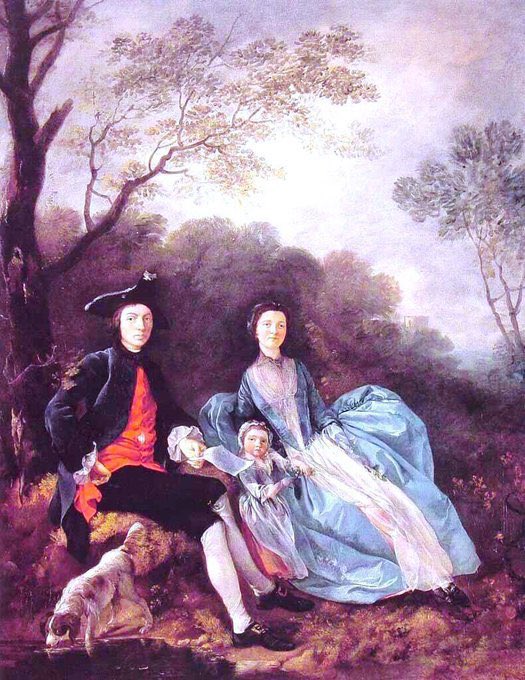In his final years Gainsborough created some of the most elegant English portraits of the 18th C. His Morning Walk (1785), Mrs Sheridan (1785-6) & Duke of Kent (c1787) are supreme examples of an artist who understood beauty & human frailty
He remained as creative as ever in his final decade & continued his lifelong method of integrating landscape & people. Diana & Actaeon (c1785) & The Mall (1783) are late masterpieces of this time. Gainsborough’s drawings show his care in forming such joyous compositions
As a foil to his society portraits he began his Cottage series where, influenced by Murillo, he sought to raise the stature of honest peasant life. Cottage Girl (1785), Girl with Pigs (1782) & Cottage Door (1780s). The Cottage Girl is his masterpiece in .@NGIreland
The 1770s were a period of intense genius for the artist. He sought to place the sitters in Van Dyck swagger, integrate them into a landscape & include dogs (if he could). Here is his lovely portrait of his wife & one of Ms Duncombe as well as Pomeranian Dogs
As the artist matured his brushwork became more fluid & he used longer brushes which gave his work a sense of movement. His portraits of the Duchess of Beaufort (c1775), Mrs Graham (c1775) & of his nephew & assistant Gainsborough DuPont (c1775) are ravishing masterpieces
Gainsborough’s first love was always landscape painting & he snook it into his portraits where he could. Peasants Returning from Market (1767-8) & the Harvest Wagon (1767). He continued to study & learn from Old Masters such as Rubens’ Descent from the Cross (1760s)
Gainsborough’s greatest portraits from the 1750s are of his family. Miss Gainsborough Gleaning (1756-9), the Painter’s Daughters (1758) & the Artist’s Wife (c1758) attest to his growing maturity as a portraitist, as well as his love for his family
By 1752 the Gainsboroughs were in Ipswich. Portraits & money troubles (driven by his love of the good life) were a theme. He sought to place his portraits in sylvan surrounds. The Gravenor Family (1752-4), John Plampin (1753-5) & the Lloyds (1755)
In 1746 Tom made a great match & married Margaret, the daughter of a duke. She brought some stability to a man who liked to have fun & gave him 2 daughters. Here’s an early masterpiece of Mr & Mrs Andrews (1748-9), the Dutch inspired Cornard Wood (1746-7) & his family (c1748)
Botticelli was considered decadent in the 19th C. Indeed Wilde was one of his promoters. Conservative society was uncomfortable with the nudity, the beautiful youths & indeed the suppressed emotion. Today, it is for these reasons he is loved.






























